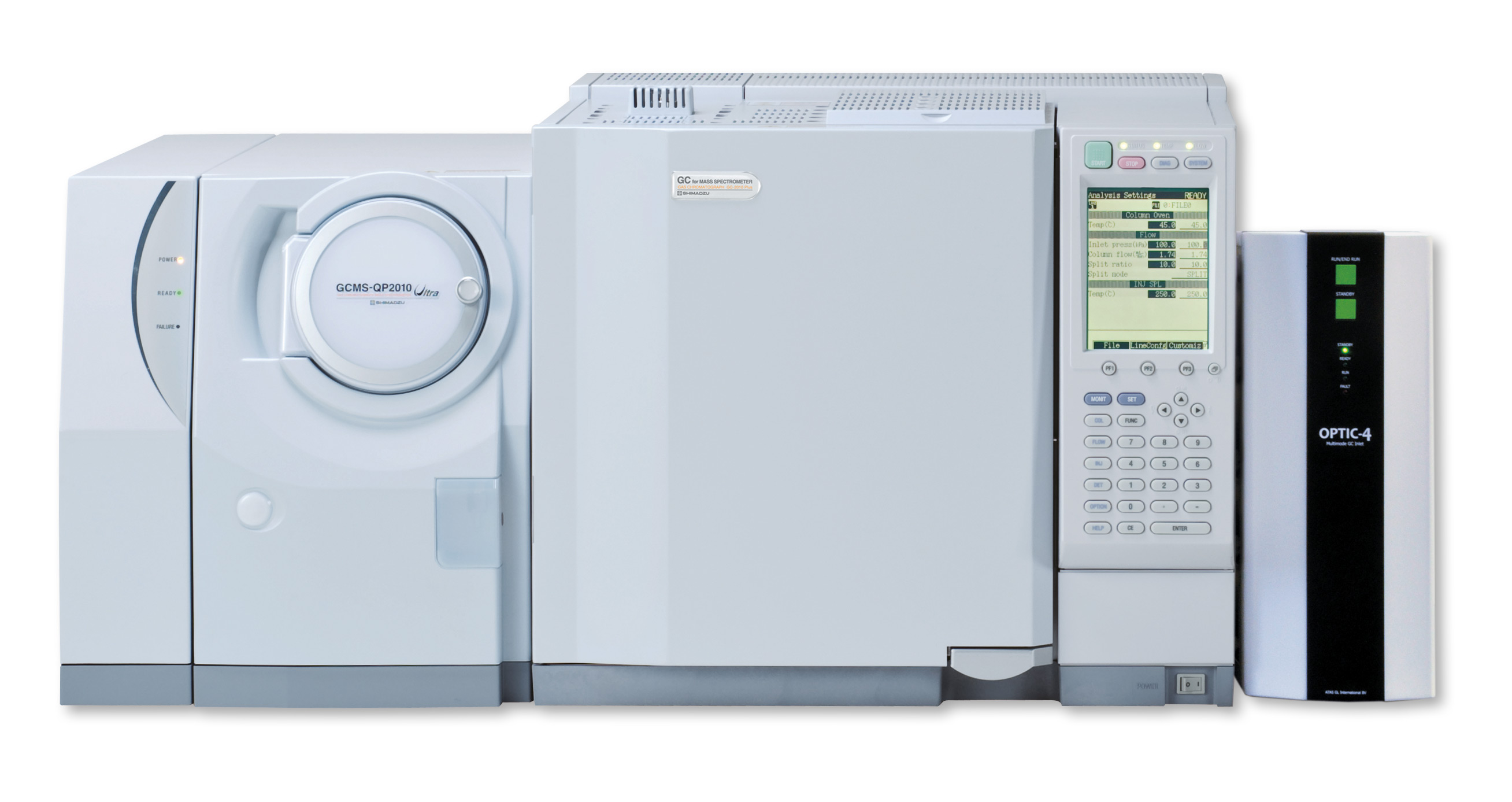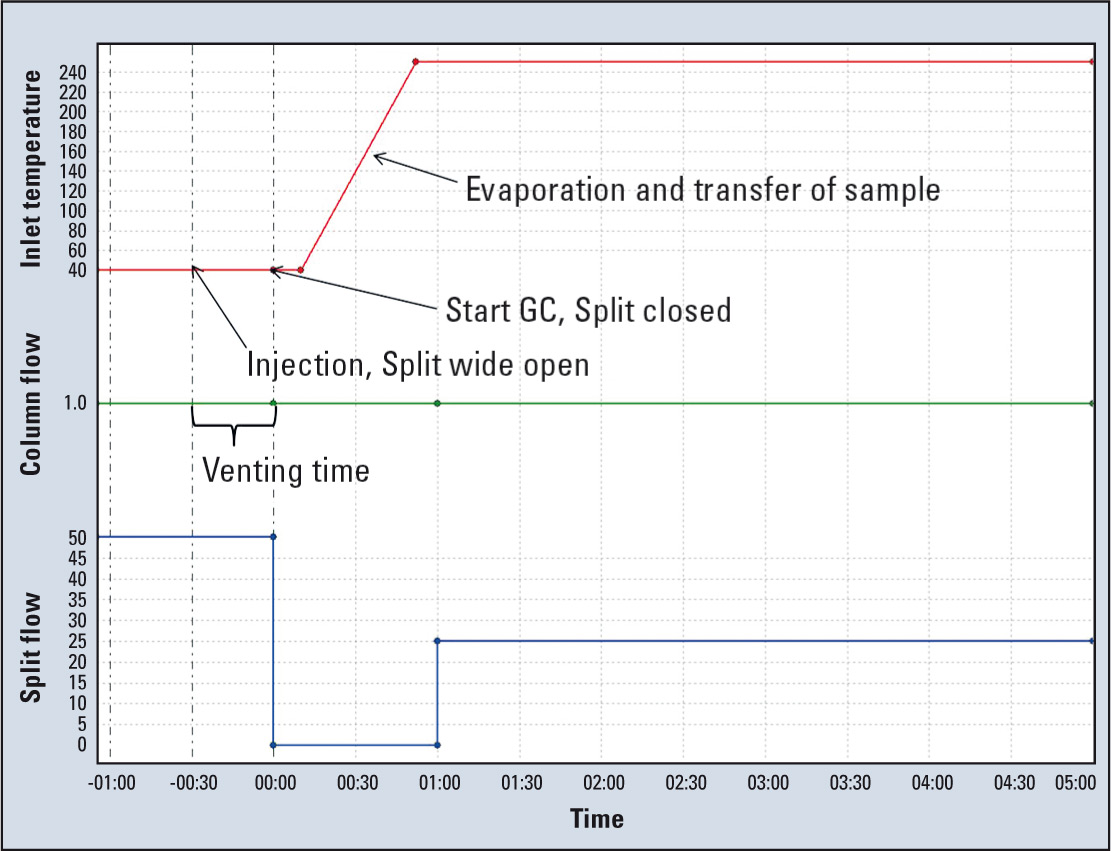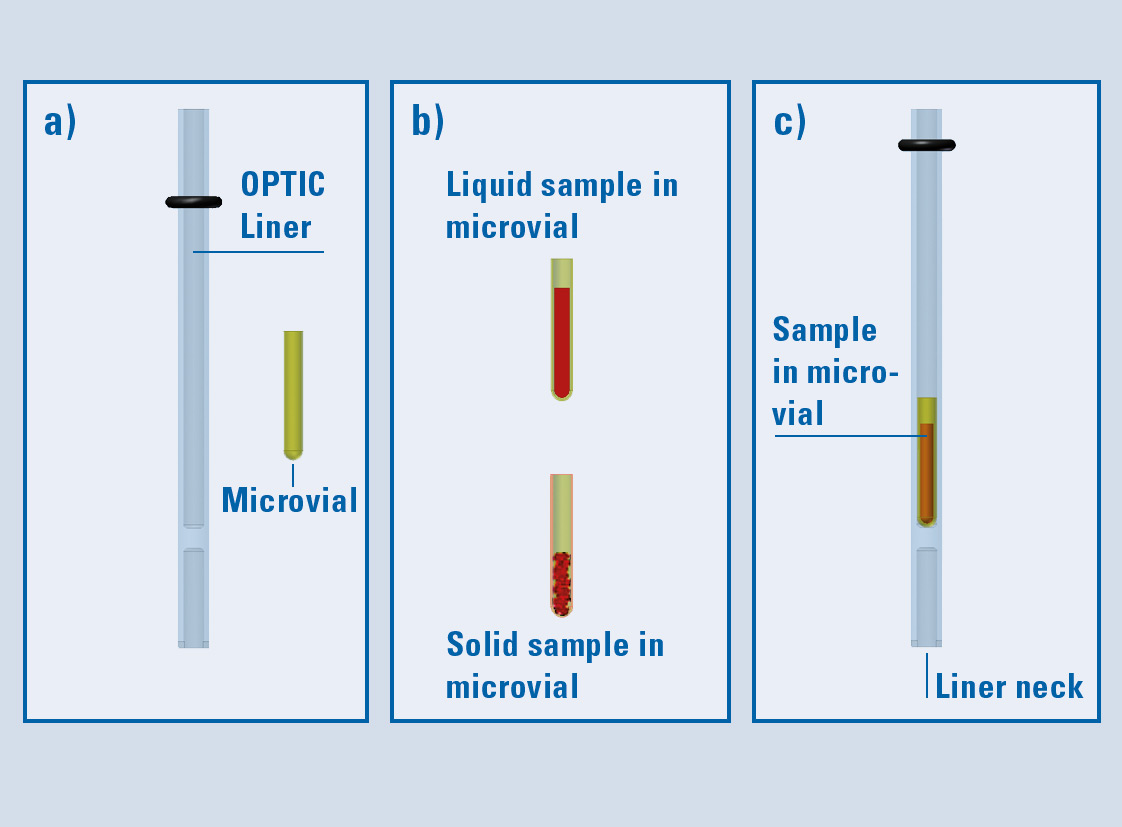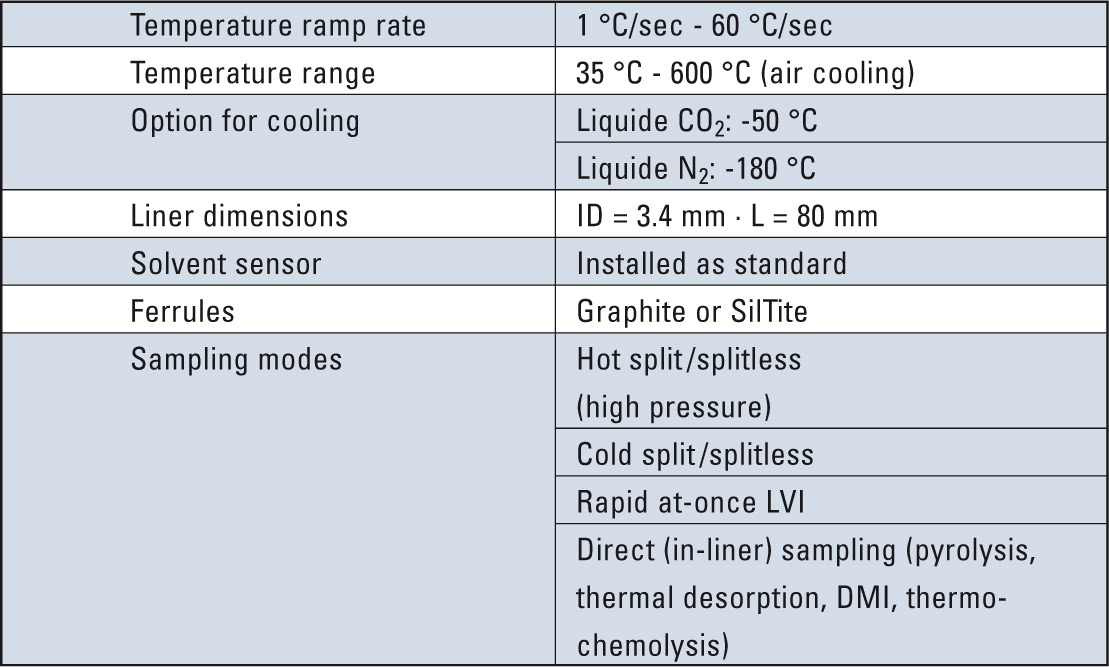Performance redefined
New generation of the most powerful multimode inlet – OPTIC-4
 Figure 1: Shimadzu GCMS-QP-2010 Ultra equipped with the OPTIC-4
Figure 1: Shimadzu GCMS-QP-2010 Ultra equipped with the OPTIC-4
“Multimode” inlet is often referred to in modern chromatography equipment. But what characterizes a real multimode inlet system?
It should offer the flexibility of different injection techniques where more than one inlet would normally be needed. For a real benefit of a multimode inlet system, the standard injection modes should be supported at least as well as with a standard split/splitless injector.
In addition to standard injection modes, the temperature programmable OPTIC-4 (Atas GL) inlet offers split/splitless injections, rapid at-once large volume injections (LVI) and direct (in-liner) sampling techniques such as pyrolysis, thermochemolysis and thermal desorption as single or multi-shot analysis.
Direct (in-liner) sampling technique
The direct in-liner sampling technique enables analysis of samples directly out of the liner. This technique is useful when handling solid or highly matrix-loaded samples since additional sample preparation such as extraction, clean-up or diluting is unnecessary. The sample itself can be positioned in a µ-vial which is placed in the liner. Analysis can then be done directly by heating the sample.
Boiling Point selected transfer
Using the technique of boiling point selected transfer, a defined heating ramp is applied to the sample. Only the compounds extracted by the applied temperature profile are transferred to the GC column inlet. Using the optimal temperature profile the compounds with higher molecular weight or matrix remain in the µ-vial. After the analysis the µ-vial is discard and the liner can be re-used.
 Figure 2: Temperature and flow method of an LVI
Figure 2: Temperature and flow method of an LVI
Pyrolysis
Using the technique of pyrolysis, the applied temperature ramp should be as high as possible, as the time needed in pyrolysis for heat transfer to the sample directly influences reproducibility of the pyrolysis application. The maximum linear temperature ramp of the OPTIC-4 is 60 °C/s up to a maximum temperature of 600 °C, which is suitable for most pyrolysis applications.
As seen in figure 3 a µ-vial filled with sample can be positioned into an OPTIC-4 liner which is large enough to accommodate it. In principle, temperature programmed vaporizers (PTV) apply a uniform temperature profile with fast and reproducible heat transfer to the sample. The patented low thermal mass design of the OPTIC-4 body together with direct resistive heating enables the flexibility of standard liner inner diameters (ID) of 3.4 mm. As most PTV systems in PTV mode working with liner IDs of less or equal than 2 mm are restricted due to the heating technique, the OPTIC-4 distinguishes itself through its unique direct resistive heating and opens the above mentioned application flexibilities.
 Figure 3: Direct sampling using DMI technique
Figure 3: Direct sampling using DMI technique
Large volume injection
Wherever detection limits are crucial, for example for determination of pollutants in environment, large volume injection (LVI) techniques are of interest. LVI can be carried out either by applying on-column injection using a retention gap or by using PTV injectors. On-column techniques are less suitable for dealing with dirty samples, as the dirt easily contaminates the column inlet. In this respect, LVI using a PTV is advantageous. For LVI into a PTV inlet different techniques are mentioned in the literature [1]. Here the well-known and in use proven technique of solvent split injection is highlighted.
LVI – Solvent split injection
In the solvent split injection the inlet temperature at the time of injection is below the solvent boiling point, with the Split exit wide open. With method adjustment for the optimal temperature and venting time, the solvent is eliminated. Closing the Split exit completely and raising the inlet temperature, the analytes are transferred to the column. Since solvent evaporation temperature and venting time is crucial in method development, this becomes much easier with the OPTIC-4 solvent monitor installed as default. The solvent monitor is installed in the split line, and it detects the evaporating solvent peak by a thermal conductivity detector monitored in real time in the Evolution software.
Rapid at-once LVI
The maximum volume which can be held within the injector depends mainly on the liner dimensions and the amount of packing material [1]. Using inserts of ID 3.4 mm in the OPTIC-4, sample volumes up to 150 µl can be injected rapidly, hence the name “rapid at-once LVI.” Compared with other PTV inlets equipped with narrow inserts (± 1 mm ID), the maximum volume that can be injected at-once is around 20 µl [1]. If more sample volume should be introduced, a speed controlled LVI can be done where the injection speed is limited by the solvent evaporation time. With rapid at-once LVI the method development is simplified, as no optimization of injection speed is necessary.
 Table 1: Key Features of OPTIC-4
Table 1: Key Features of OPTIC-4
Depending on the sample analyzed and particularly on its matrix content, the liner may have to be changed after a few hundred or even after a few tens of injections. Based on the OPTIC-4 and the new AOC-5000 Plus, the option of automated liner exchange (LINEX) simplifies the process of exchanging liner and increases laboratory productivity. Furthermore, the LINEX option enables the automated direct sampling techniques available with the OPTIC-4, as the direct analysis requires one liner (filled with a µ-vial and sample or packed liners where sample is adopted) for each sample.
The new OPTIC-4 (Atas GL) with its patented design provides the flexibility to choose different injection modes by defining liner and method respectively. Using the Shimadzu AFC (advanced flow control) the OPTIC-4 pneumatic control is fully implement in GC/GCMSsolution software.
- “Trace analysis with gas chromatography using online enrichment and large volume injection” Chapter 3.1 Hans Mol